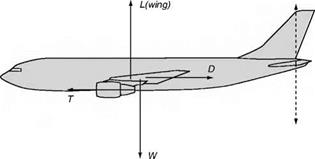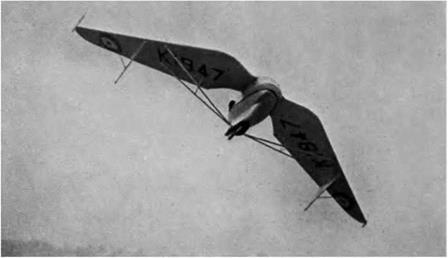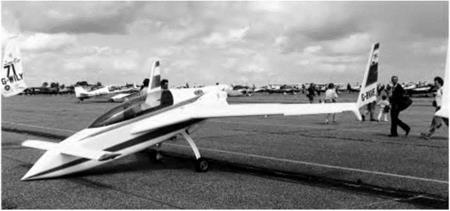‘Tail-less’ and ‘tail-first’ aeroplanes
The reader will probably have realised by now that the existence of this auxiliary plane – the stabiliser, as the Americans rather aptly call it – is a necessity rather than a luxury, because even if the four main forces can be balanced for one particular condition of flight, they are not likely to remain so for long. What then of the so-called tail-less type of aeroplane?
This type has had followers from the very early days of flying – and among birds from prehistoric times – and although the reasons for its adoption have changed somewhat, a common feature has been a large degree of sweepback, or even delta-shaped wings, so that although this type may appear to have no tail, the exact equivalent is found at its wing tips, the wings being, in fact, swept back so that the tip portion can fulfil the functions of the tail plane in the orthodox aeroplane. In fact, it is true to say that the ‘tail-less’ type has two tails instead of one! (Figs 5C and 5D).
More unusual is the tail-first or canard configuration aeroplane. A most important historical example was the original Wright Flyer, which is generally accepted to have made the first controlled power-driven flight. Like many early ideas, the canard has recently made something of a come-back (Fig. 5E, overleaf), and examples are now found for many types of aircraft, but particularly for missiles and highly manoeuvrable fighters such as the Eurofighter Typhoon. A tail in front can hardly be called a tail, and this surface is commonly known now as the foreplane.
L (tail)
|
|
Fig 5.3 The pilot can adjust the tail lift so that the resultant moment is zero and the aircraft is trimmed. The tail lift can be either upwards or downwards
|
|
Fig 5C Tail-less – old type (By courtesy of Flight)
The Westland Hill Pterodactyl.
|
|
Fig 5D Tail-less – new type
This popular form of powered microlight aircraft has been derived from hang-glider technology.
|
|
Fig 5E Tail-first
Apart from the canard layout, the Rutan Vari-Eze shows many unusual features such as a pusher propeller, composite construction, and a nosewheel that can be retracted in flight or when parked.















